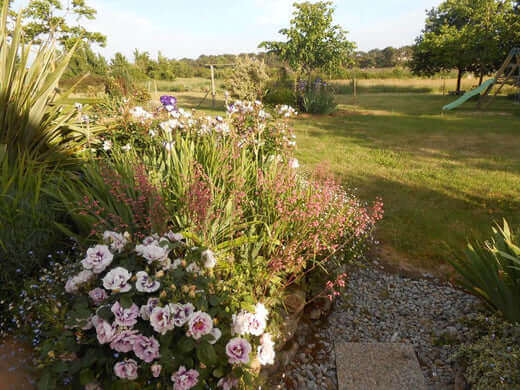Perennials are plants that live for more than two years
Typically flowering and producing seeds multiple times during their lifespan.
Unlike annuals, which complete their life cycle within one growing season, perennials continue to grow and bloom year after year, provided they receive proper care and favorable growing conditions.
Perennials offer several benefits to a garden:
Longevity: Perennials are known for longevity, meaning they can provide beauty and enjoyment in your garden for many years. It saves you the effort of replanting every year, as with annuals.
Cost-effectiveness: While the initial cost of purchasing perennial plants may be higher than annual, their long lifespan makes them cost-effective in the long run. You won't need to buy new plants yearly, reducing your overall expenditure.
Low maintenance: Once established, many perennials require relatively low maintenance.
They often have deep root systems that make them more drought-tolerant and help them access nutrients from the soil. It can save you time caring for annuals requiring frequent planting and watering.
Attractiveness: Perennials come in a wide variety of colors, shapes, and sizes, offering diverse options to enhance the aesthetics of your garden. They can continuously display blooms throughout the growing season, adding beauty and visual interest to your outdoor space. Trillium plants live for over 20 years.
Ecological benefits: Perennials, predominantly native varieties, can support local ecosystems by providing food pollinators, such as bees and butterflies. They contribute to biodiversity and help create a more sustainable and environmentally friendly garden.
Stability and soil health: Perennial plants' root systems help stabilize soil, preventing erosion and improving its structure over time. They also contribute organic matter to the earth as it grows, enhancing its fertility and promoting soil health.
Choosing perennials that are well-suited to your specific climate, soil conditions, and sunlight availability is vital
Proper planting, watering, and maintenance are necessary to ensure their long-term success and the maximum benefits they can bring to your garden.


